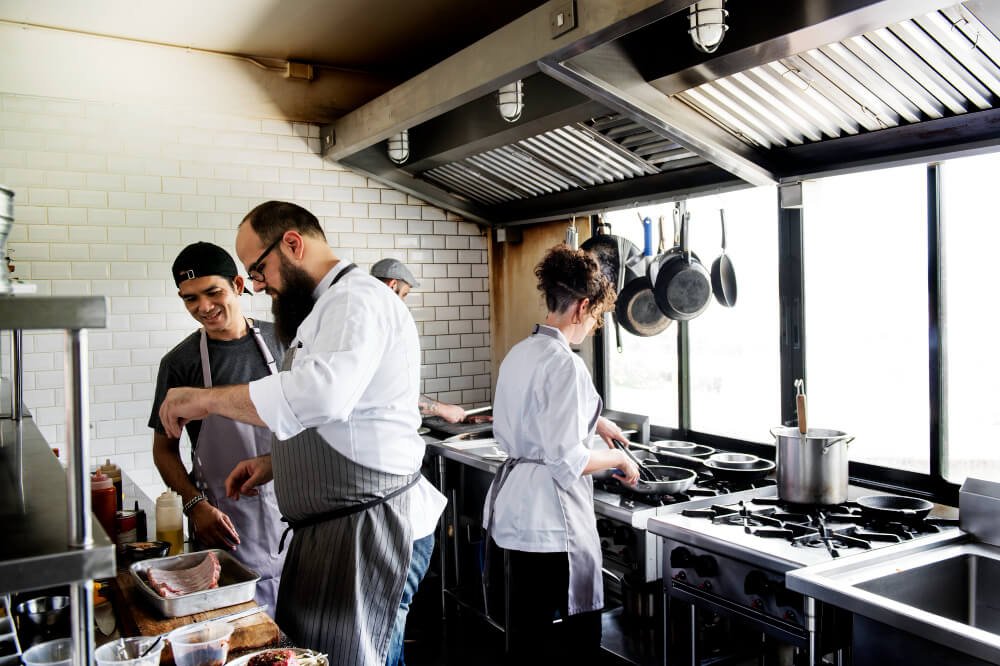Have you ever wondered why some restaurant kitchens function like well-oiled machines while others descend into chaos during busy service?
At the heart of every successful restaurant kitchen lies efficient order flow and communication between staff. When order flow works well, it minimizes wait times, cuts down on mistakes, and keeps everyone from chefs to servers in sync. However, achieving this harmony requires thoughtful restaurant kitchen design and a strategic layout that facilitates movement and efficiency.
Effective order management is the backbone of a successful restaurant. It ensures faster service for customers, fewer errors in order preparation, and significantly improved customer satisfaction. The foundation of this efficiency begins with proper restaurant kitchen setup, including everything from the restaurant kitchen floor plan to selecting the right restaurant kitchen equipment.
In this article, we’ll explore practical strategies to improve restaurant order flow between your front-of-house staff and chefs. Whether you’re struggling with communication breakdowns or simply looking to fine-tune your operation, these techniques will help transform your kitchen’s performance and enhance your guests’ dining experience.
Understand the Basics of Restaurant Order Flow
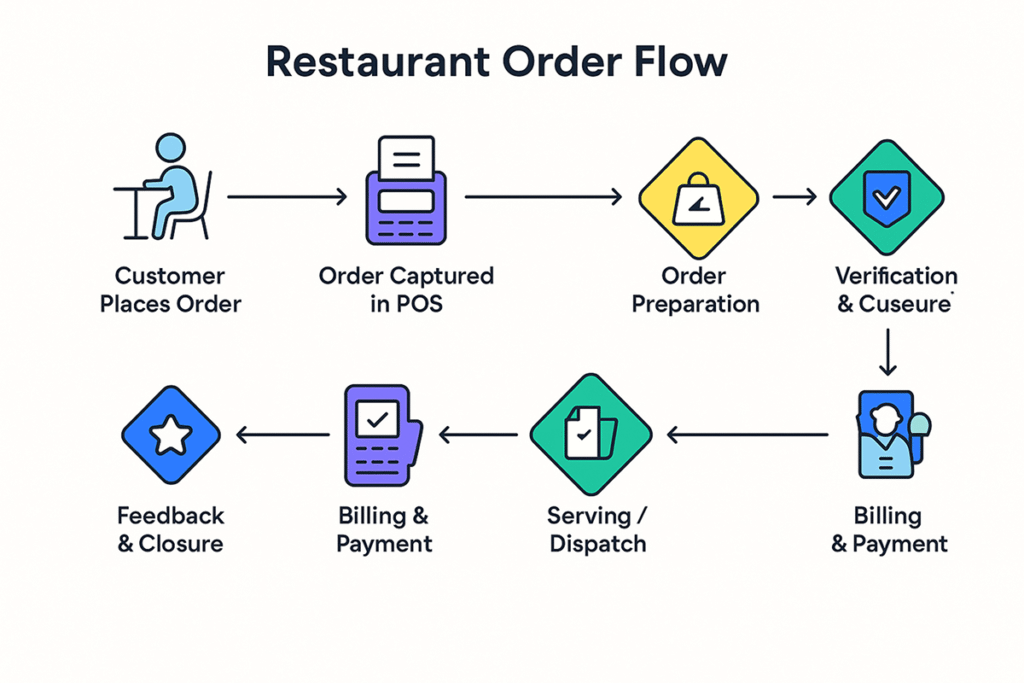
What is order flow in a restaurant kitchen?
In the fast-paced environment of a restaurant kitchen, order flow represents the journey of a customer’s order from the moment it’s placed until the completed dish reaches the table. Essentially, it’s the systematic process that guides how orders move through your kitchen operations with precision and efficiency.
Order flow is more than just a procedural concept—it forms the backbone of kitchen operations. It encompasses the entire sequence of steps an order follows, starting from entry into the system, progressing through preparation stages, and culminating with plating and service. This careful orchestration determines how smoothly your kitchen functions, particularly during peak hours.
A well-designed order flow system in a restaurant kitchen setup creates a logical path for information to travel between front-of-house staff and kitchen personnel. It establishes clear communication channels that reduce confusion and prevent orders from getting lost in the shuffle.
The foundation of effective order flow begins with accurate, timely order entry. Modern digital tools help track exactly when each order is taken and when courses should be prepared, maintaining consistency throughout service. These precise timestamps guide kitchen staff on expectations for every dish and course.
Why smooth order flow matters for service and quality
The importance of streamlined order flow cannot be overstated—it directly impacts virtually every aspect of your restaurant’s performance. A study by the National Restaurant Association found that approximately 60% of customers say a bad order can deter them from returning to a restaurant, highlighting how critical accurate order processing is to customer retention.
Smooth order flow delivers several tangible benefits:
- Faster Service: Reduces wait times for customers, a crucial factor considering 54% of guests refuse to wait over 30 minutes for food
- Fewer Errors: Minimizes mistakes by keeping all staff synchronized and informed
- Enhanced Customer Satisfaction: Ensures consistent food quality and timely delivery
- Staff Efficiency: Keeps front and back-of-house teams working harmoniously
- Better Inventory Control: Enables more accurate tracking of ingredients and usage
Furthermore, an optimized restaurant kitchen layout plays a fundamental role in facilitating smooth order flow. A thoughtfully designed restaurant kitchen floor plan keeps high-use ingredients and tools within easy reach, reducing unnecessary movement and saving precious seconds during busy service periods. This efficiency is particularly important as studies show restaurants using digital ordering tools have observed nearly 20% increase in service speed.
The physical arrangement of your restaurant kitchen equipment also impacts how quickly and accurately orders move through the preparation process. Strategically positioned workstations that align with the natural progression of food preparation minimize bottlenecks and create a more intuitive workflow for kitchen staff.
For restaurants managing multiple order sources—including in-person dining, takeout, and delivery services—the challenges multiply. Indeed, over 99% of restaurants now serve at least one online ordering service alongside their in-house guests. Consequently, integrating these various channels into a unified, coherent order flow becomes essential for maintaining consistency and quality across all customer touchpoints.
Optimize Your Restaurant Kitchen Layout
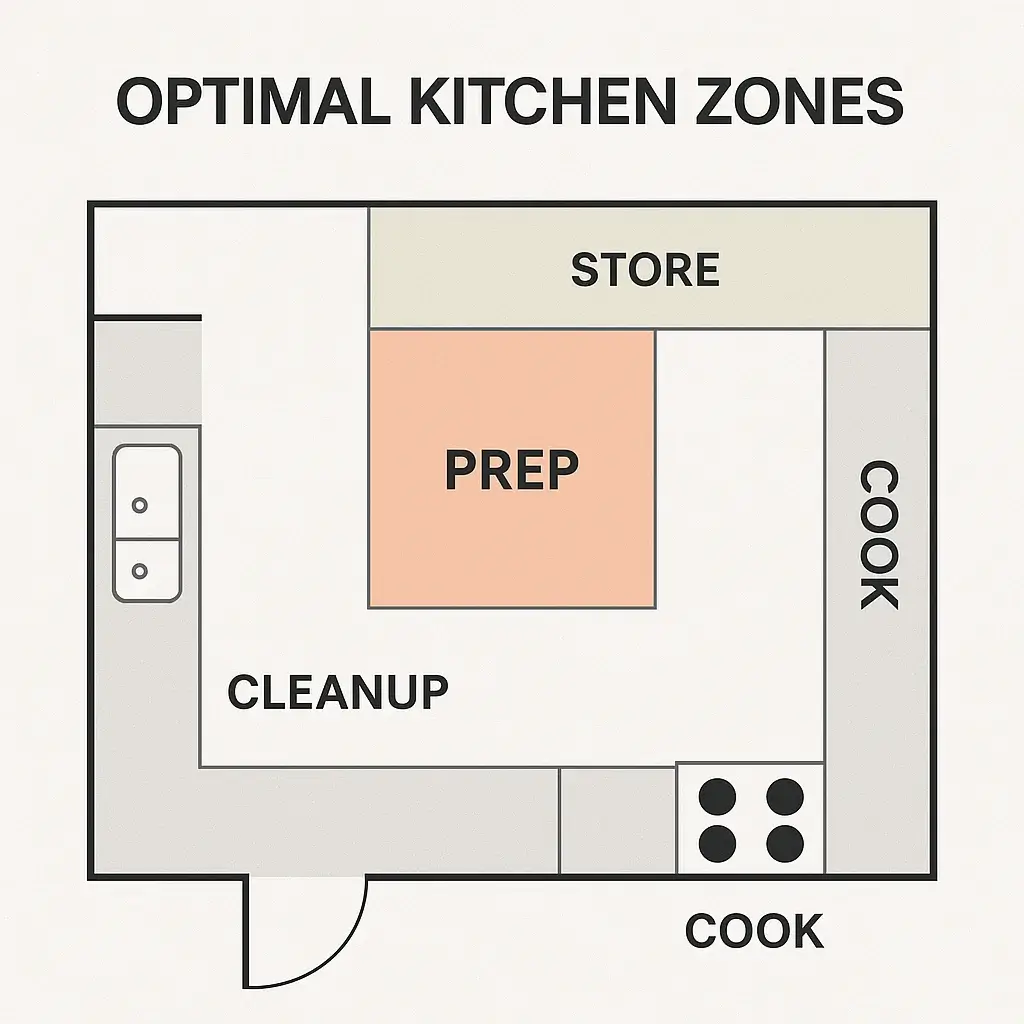
The physical arrangement of your restaurant kitchen serves as the foundation for successful order flow. A thoughtfully designed space enables smooth operations and prevents costly delays during service.
Designing for movement and efficiency
The layout of a restaurant kitchen design should minimize unnecessary movement and create a logical flow of operations. According to research, an effective kitchen layout can significantly enhance workflow, minimize bottlenecks, and improve staff production.
Start by organizing your kitchen into distinct zones for specific tasks. The most effective configurations include:
- Cleaning/washing area – located near the kitchen entrance for easy dish drop-off
- Storage zones – positioned strategically near preparation areas
- Preparation stations – placed between storage and cooking areas
- Cooking area – situated near the front, adjacent to service area
- Service area – positioned at the very front for quick delivery to customers
Strategic placement of equipment and workstations optimizes workflow and reduces unnecessary movement. For instance, placing high-use ingredients and tools within arm’s reach saves precious seconds during peak service hours. Additionally, ergonomic considerations are vital – work surfaces at comfortable heights prevent strain and enhance staff comfort over long shifts.
Common layout mistakes to avoid
Poor layout decisions can dramatically impair kitchen efficiency. First among these is inadequate circulation space. Aim for approximately 4 feet between countertops to provide sufficient movement room. In smaller kitchens, 39 inches represents the absolute minimum.
Numerous establishments make the critical error of creating undersized prep areas. This leads to cluttered workspaces and inefficient operations. Similarly, scattered or poorly organized kitchen sections unnecessarily consume valuable space.
Another frequent mistake involves improper placement of equipment. Refrigerators positioned far from cooking stations force staff to take excessive steps throughout service. Moreover, a study found nearly 60% of kitchen staff reported that strategic equipment placement significantly helped them work faster.
Neglecting the relationship between kitchen layout and safety creates serious hazards. Essential features like gas leak detection systems, firefighting equipment, and evacuation pathways must be integrated into your restaurant kitchen plan. Furthermore, using inappropriate flooring materials creates slip hazards, especially during busy service periods.
How restaurant kitchen floor plans impact order speed?
A study by Toast found that 35% of customers are more likely to return if their food arrives faster, directly connecting kitchen efficiency to customer loyalty. Your restaurant kitchen floor plan dramatically influences this aspect of service.
An efficient layout supports logical, linear flow—from receiving and storage through preparation, cooking, plating, and service. This reduces unnecessary backtracking and collisions between staff, with kitchens designed with operational flow seeing up to 25% faster ticket times during peak periods.
The placement of cooking equipment in relation to prep and plating areas directly impacts how quickly orders move through the kitchen. By organizing stations in sequence according to the natural progression of dish preparation, you create an intuitive workflow for kitchen staff.
For high-volume operations, assembly line layouts work exceptionally well. Food preparation begins at one end, with the service area at the opposite end, creating a streamlined progression. Conversely, island layouts foster teamwork and open communication while providing flexibility for diverse menu items.
Ultimately, the right layout depends on your specific needs, including kitchen size, menu complexity, and service style. What matters most is creating a restaurant kitchen setup where every component supports your team’s ability to execute orders swiftly and accurately.
Use Technology to Streamline Orders
In today’s competitive dining landscape, technology has become essential for optimizing restaurant kitchen operations. Modern digital solutions offer powerful ways to enhance communication between front and back-of-house teams.

Benefits of a Kitchen Display System (KDS)
A Kitchen Display System replaces traditional paper tickets with digital displays, creating a more efficient kitchen environment. This technology streamlines communication between kitchen and front-of-house staff while reducing paper waste. KDS screens display orders in real time, prioritizing them based on cooking times and tracking preparation status for maximum efficiency.
KDS implementation delivers several measurable advantages:
- Reduces order errors by up to 30% through automated verification
- Eliminates lost or delayed orders caused by paper tickets
- Provides insights into item cook times and predicts when orders will be ready
- Allows customization to match specific kitchen workflows
Furthermore, kitchen staff can mark dishes as “in preparation,” “ready to serve,” or other statuses, providing immediate updates to waiting staff and customers alike. This transparency keeps everyone informed and reduces questions directed at kitchen staff, allowing them to focus on food preparation.
POS integration for real-time updates
The true power of digital order systems emerges through integration with your Point-of-Sale (POS) system. When properly connected, your POS system works with online ordering platforms and kitchen display systems to create a fast, reliable workflow that reduces human error and improves order tracking.
POS integration enables orders to flow seamlessly between systems, saving time and minimizing miscommunication. Orders placed at the counter, table, or online are automatically sent to the kitchen team, eliminating reliance on handwritten tickets or verbal instructions.
Besides reducing errors, this integration provides valuable data on kitchen performance, including average preparation times, peak hours, and most-ordered items. Such analytics allow restaurant kitchen managers to optimize staffing, plan menus strategically, and make data-driven decisions to enhance efficiency.
Reducing errors with digital order tracking
Digital order tracking significantly improves accuracy throughout the entire food preparation process. Modern systems include features like automated order verification, real-time inventory tracking, and smart modification handling.
When customers make special requests or modifications, these changes are instantly communicated to the kitchen, preventing frustration caused by miscommunication. KDS highlights critical details such as special requests, menu customizations, dietary requirements, and allergy information—updating kitchen staff in real time.
Coupled with a well-designed restaurant kitchen layout, these technological solutions create a seamless system where orders flow naturally from entry to completion. By eliminating manual processes, restaurants can reduce labor costs, increase throughput, and ultimately deliver a superior dining experience.
Train Staff for Better Coordination
Effective staff training forms the cornerstone of seamless order flow in any restaurant kitchen. Even with perfect layout and technology, the human element ultimately determines your operational success.
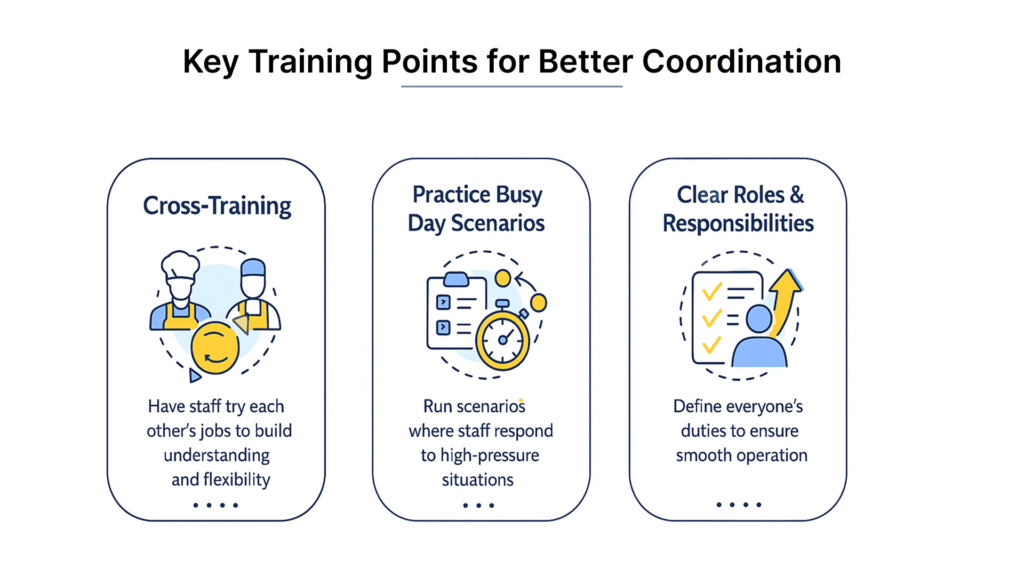
Cross-training between FOH and BOH
Cross-training staff across different positions creates numerous advantages for your restaurant kitchen setup. This approach enables employees to work in multiple areas, ensuring operations run smoothly even when someone is absent or during unexpected rushes. Kitchen staff trained in customer service and servers who understand basic kitchen functions create a more versatile team.
Cross-training naturally builds empathy between front and back-of-house teams by giving each group firsthand experience of the other’s challenges. This mutual understanding strengthens team cohesion and improves overall collaboration. For instance, allowing servers to spend time in the kitchen helps them appreciate the meticulous preparation behind each dish, while kitchen staff who understand dining room dynamics gain perspective on customer interactions.
Role-playing high-pressure scenarios
Regular order-flow training sessions help staff adapt to high-pressure situations. Through structured role-play exercises, your team can practice managing difficult scenarios like rush periods, special requests, or customer complaints in a controlled environment.
These exercises work for both new hires and veterans. For inexperienced staff, role-playing builds confidence and competence, whereas seasoned employees can discover new approaches to challenging situations. One effective scenario involves having waitstaff play demanding customers while teammates practice managing the situation professionally.
To maximize effectiveness, write scenarios in advance, maintain realism, and ensure participants take the exercise seriously. Restaurant staff who participate in these training sessions typically receive better customer feedback, directly improving guest satisfaction.
Setting clear roles and responsibilities
Clearly defined responsibilities prevent crucial tasks from falling through cracks during busy service periods. When each team member understands their specific duties, your kitchen operates like a well-oiled machine.
In high-volume operations, assigning an expeditor to handle communication between FOH and BOH significantly improves efficiency. This person manages requests from servers, checks on delayed orders, and ensures special instructions are properly implemented. This approach minimizes unnecessary conversation in the kitchen, allowing chefs to maintain focus on food preparation.
Structured digital checklists further reinforce role clarity by ensuring critical service steps aren’t overlooked, ultimately reducing service errors. Through clarity of expectations and regular feedback, your restaurant kitchen design will support not just physical flow but also information flow between all team members.
Monitor and Improve Continuously
Continuous improvement stands at the heart of optimizing order flow in a restaurant kitchen. Even well-designed systems require ongoing attention to maintain peak performance.
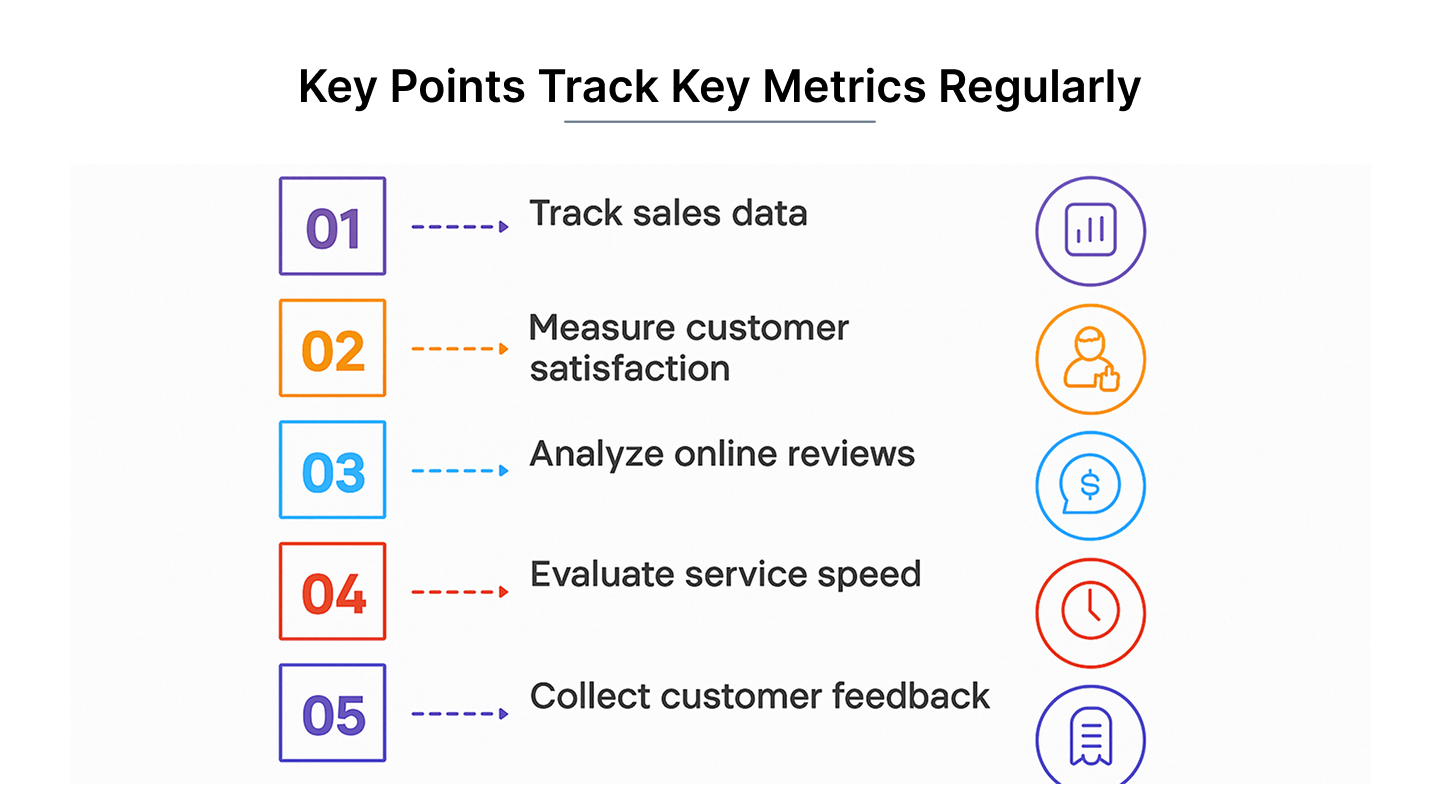
Using data to identify bottlenecks
Analyzing operational data helps pinpoint inefficiencies that hamper order flow. POS and KDS reporting features highlight order trends across different times of day, week, or season. By examining this information, you can identify bottlenecks that significantly impact kitchen efficiency and customer satisfaction. A well-known hotel chain reduced bottlenecks by integrating an order management system, resulting in 20% improvement in service speed and accuracy.
Encouraging feedback from staff
Your team navigates the restaurant kitchen layout daily, making their insights invaluable. Establish direct methods for staff to voice concerns about workflow issues. Regular team meetings facilitate open communication about process improvements, fostering a culture where employees feel valued for their input. Recognize and reward team members who contribute helpful suggestions, as this cultivates ongoing participation in optimization efforts.
Adjusting workflows based on peak hours
Data-driven scheduling represents a cornerstone of modern restaurant kitchen setup. Analyze sales data to identify peak periods and adjust staffing accordingly. This approach prevents both understaffing (which causes delays) and overstaffing (which wastes resources). Well-rested staff make fewer errors and provide better service, directly enhancing customer experience.
Conclusion
Efficient order flow stands as the cornerstone of any successful restaurant operation. Throughout this article, we’ve explored several critical aspects that contribute to seamless communication between front-of-house staff and kitchen teams.
First and foremost, a well-designed restaurant kitchen layout creates the physical foundation for success. Thoughtfully arranged workstations, adequate circulation space, and strategic equipment placement significantly reduce unnecessary movement and prevent bottlenecks during busy service periods.
Additionally, modern technology offers powerful solutions for streamlining order processes. Kitchen Display Systems and integrated POS solutions eliminate paper tickets, reduce errors, and provide real-time updates that keep everyone synchronized. These digital tools have demonstrably improved service speed by up to 20% while minimizing miscommunication.
Staff training, however, remains equally important despite technological advances. Cross-training between front and back-of-house teams builds mutual understanding and empathy, while role-playing exercises prepare your staff for high-pressure situations. Clear role definition further ensures nothing falls through the cracks during busy service periods.
Most importantly, continuous improvement must become part of your kitchen culture. Regular data analysis helps identify persistent bottlenecks, while staff feedback provides invaluable insights from those who navigate your systems daily.
Remember, achieving optimal order flow requires ongoing attention and refinement. Small adjustments to your layout, technology implementation, or training procedures can yield substantial improvements in efficiency, accuracy, and ultimately, customer satisfaction. Your restaurant’s success depends on this harmonious dance between staff and chefs – when perfected, it transforms chaotic kitchens into well-orchestrated culinary showcases that delight guests and staff alike.
Key Takeaways
Efficient order flow is the backbone of successful restaurant operations, directly impacting customer satisfaction, service speed, and staff coordination. Here are the essential strategies to transform your kitchen into a well-orchestrated operation:
• Design your kitchen layout for logical workflow – Organize zones sequentially from cleaning to service, with 4-foot circulation spaces and strategic equipment placement to minimize unnecessary movement.
• Implement Kitchen Display Systems (KDS) and POS integration – Digital order tracking reduces errors by up to 30% while providing real-time updates that keep all staff synchronized.
• Cross-train staff between front and back-of-house – Build empathy and understanding through role-playing exercises and clear responsibility definitions to prevent communication breakdowns.
• Use data analytics to identify and eliminate bottlenecks – Monitor peak hours, track preparation times, and gather staff feedback to continuously optimize workflows and staffing levels.
• Establish a culture of continuous improvement – Regular team meetings, performance analysis, and workflow adjustments based on operational data ensure sustained efficiency gains.
When these elements work together harmoniously, restaurants typically see 20% improvements in service speed, fewer order errors, and significantly enhanced customer satisfaction. The key is treating order flow optimization as an ongoing process rather than a one-time fix.
FAQs
Q1. How can I improve communication between front-of-house staff and kitchen staff?
Cross-training staff between front and back-of-house roles can significantly improve communication. This builds mutual understanding and empathy, leading to better coordination during service. Regular team meetings and role-playing exercises can also help staff practice handling high-pressure scenarios effectively.
Q2. What role does technology play in streamlining kitchen operations?
Technology plays a crucial role in modern kitchens. Kitchen Display Systems (KDS) and integrated Point-of-Sale (POS) systems can reduce order errors by up to 30%, provide real-time updates, and eliminate the need for paper tickets. These digital tools improve service speed and accuracy while keeping all staff synchronized.
Q3. How important is the kitchen layout for efficient order flow?
A well-designed kitchen layout is fundamental to efficient order flow. Organizing the kitchen into distinct zones for specific tasks, ensuring adequate circulation space (ideally 4 feet between countertops), and strategically placing equipment can significantly reduce unnecessary movement and prevent bottlenecks during busy periods.
Q4. What are some common mistakes to avoid when designing a restaurant kitchen?
Common mistakes include inadequate circulation space, undersized prep areas, poor equipment placement, and neglecting safety considerations. It’s crucial to avoid scattered or poorly organized kitchen sections and ensure that high-use items are within easy reach to save time during service.
Q5. How can data analysis help improve kitchen efficiency?
Data analysis is vital for identifying bottlenecks and optimizing operations. By examining order trends, preparation times, and peak hours, restaurants can adjust staffing levels, refine workflows, and make data-driven decisions to enhance efficiency. This approach has helped some establishments improve service speed and accuracy by up to 20%.

